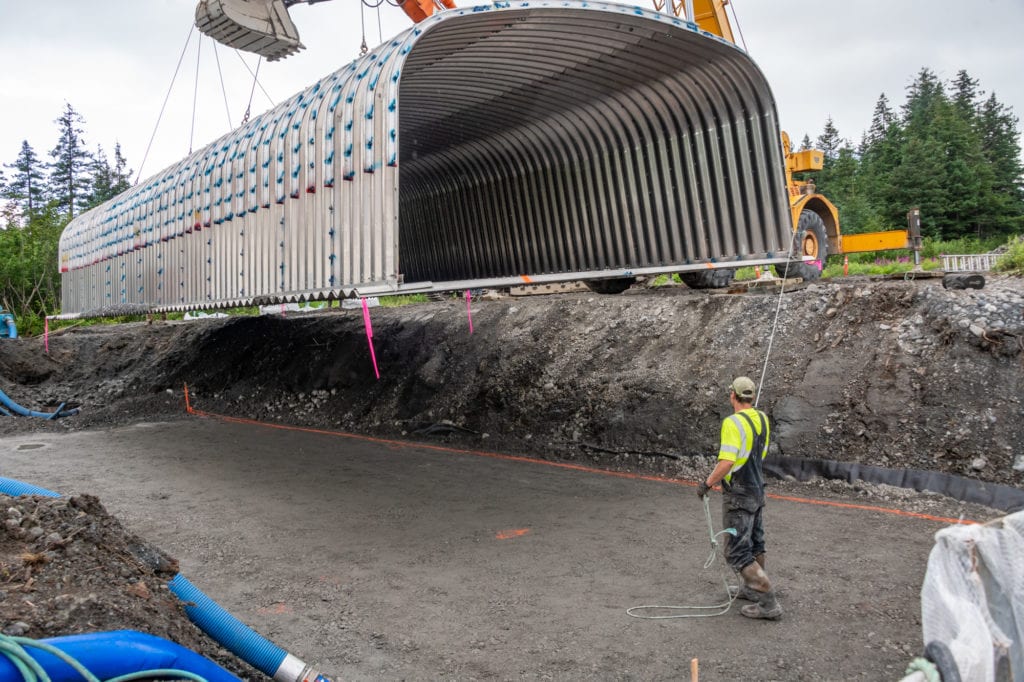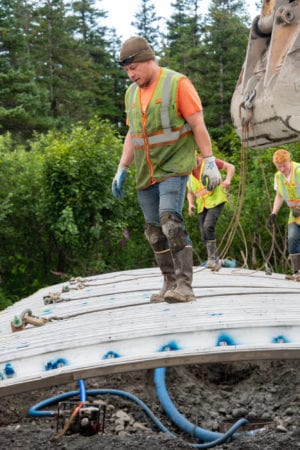
The third of three fish-friendly culverts was placed along the Copper River Highway Monday, July 27. The 20-foot-wide “box” culverts replaced narrower culverts which prevented fish from migrating freely around the Copper River Watershed. These three culverts, installed near the highway’s 25-mile marker, were among 13 culverts around the watershed that will be replaced or removed as part of an ongoing project expected to take several years to complete.
The Exxon Valdez Oil Spill Trustee Council allotted funds to the project in part because it would benefit regional salmon resources injured by the disaster. However, the project has also helped boost the coronavirus-affected local economy by delivering income to businesses like Wilson Construction, which has handled several culvert replacements around the watershed.
“Sometimes being green means you’re trying to lock up and conserve, and you’re going to reduce economic opportunities, but restoration — in this case, hydrology and watershed health — is also providing economic opportunities,” said Kate Morse, program director for the Copper River Watershed Project.

After being placed in a rectangular pit below the highway, the culvert still had to be covered in two feet of fill material. Since some road-cleaning methods, such as snowplowing, slightly erode the road surface, it’s important that an ample buffer of fill be used so that the top of the culvert isn’t impacted.
Although the first of the three 25-mile culvert replacements was challenging due to the local environment, lessons learned during the first replacement allowed the subsequent two to be accomplished more efficiently. Workers have adapted quickly to the challenges of the project, said CRWP Executive Director Lisa Docken.
The ongoing culvert replacement project is organized by the CRWP in partnership with the Department of Fish and Game, the Department of Transportation and Public Facilities, the Forest Service, the National Oceanic Atmospheric Administration and the U.S. Fish and Wildlife Service.





